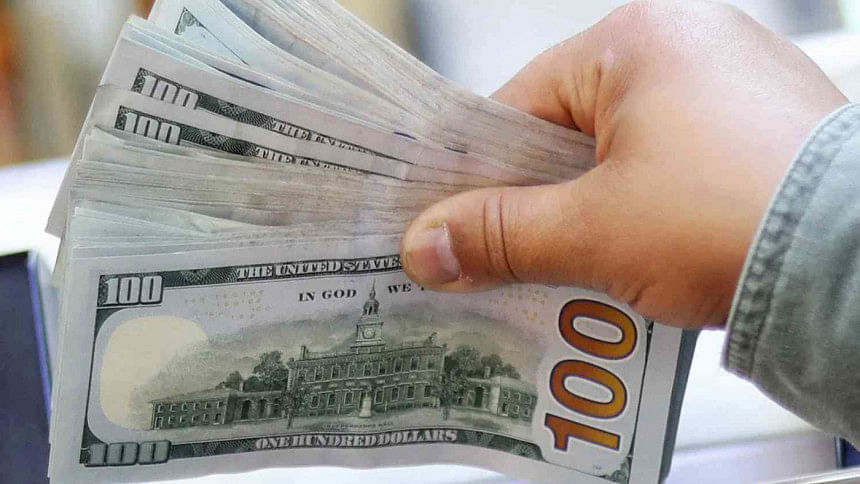Whither global finance? Look at the US dollar

Where is Wall Street going in the post-pandemic world? Finance is supposed to serve the real economy (Main Street), but the US and global economies are in the midst of a pandemic and recession, while Wall Street profits are higher than ever.
The pandemic has exposed many of the flaws of the current financial system. The New York Times columnist Thomas Friedman called this "socialism for the rich and capitalism for the rest". How does this work? The United Nations Sustainable Development Goals to tackle social inequality, climate change and living standards by 2030 demand major reforms to the global financial system. Financing for development is daunting for various systemic or structural reasons. But most of the barriers are political.
The rise of neoliberal free market philosophy since the 1970s boosted globalisation, which pushed for deregulation of finance, labour, production and service markets, alongside trade liberalisation. Globalisation has benefited many countries, but the benefits were unevenly distributed.
Financialisation or globalisation of Wall Street practices rose with the global growth of American banking and finance. In the 1960s, the American corporate push to Europe and Japan created the Eurodollar market. American banks became global bankers, receiving deposits in dollars and lending with fat margins back to banks and corporations globally.
In the 1970s, American banks innovated into investment and private banking. Unfortunately, their excess lending to Latin American governments led to the 1980s Latin American debt crisis. When competition arose from Japanese banks, American and European banks created the first Basel Accord on bank supervision to ensure that all banks competed on equal terms. It was Japanese bank excess lending domestically and in Southeast Asia that fostered the Asian financial crisis of 1997/99. During this period of financial de-regulation, financing innovation came in the form of derivatives (what Warren Buffett called weapons of mass destruction) that turbocharged leverage.
All this came down like a house of cards during the 2007/2009 global financial crisis (GFC). The leading central banks stepped in to rescue the system, but instead of punishing the bad guys, their monetary creation lifted all boats. With interest rates down to near zero, amidst huge liquidity, governments gave up austerity and fiscal deficits rose.
The result was hyper-financialisation, growing concentration, inequality, worsening climate change and fatter profits for Wall Street. Note that after 2007/9, Swiss, German, British and European banks all ceded investment banking to the top few American investment cum universal banks like Goldman Sachs, JP Morgan and Morgan Stanley. The post-GFC Basel 3 regulatory reforms covered the systemic banks, but completely missed out the non-bank financial institutions. The top American asset managers now manage more assets than even the largest Chinese banks.
The link between financialisation and growing inequality is often underappreciated. First, as Thomas Piketty famously revealed, inequality rises as long as "r" (the return on private capital) is larger than "g" (GDP growth rate). Financialisation plays a critical role on "r", because the return on equity can be turbocharged through leverage. Second, as UNCTAD data showed, between 1995-2018, developing countries earned 2 percent less on their gross external assets, while paying 2 percent more on their external debt, giving rich-country lenders essentially a 4 percent margin. This margin also happens at the retail level in almost all markets. Third, capitalism values capital more than labour, so the share of wage in total income has declined by 5 percentage points to 52 percent between 1990 and 2017. The profits of the corporate and financial sector have increased proportionately, but they are largely concentrated today in the tech and services sectors in the rich economies.
In short, for the poor and most emerging economies (the rest), financial capitalism meant losing out on their wages, income and savings. Financialisation has become a "head I win, tails you lose" for the poor, with central banks underwriting the rich with massive quantitative easing. No wonder populist protests have broken out in both poor and rich countries alike.
The current mess can be summed up as a situation where we have the highest global liquidity in history, and yet we cannot finance our long-term development needs nor solve our rising inequality. As central banks can print USD 8 trillion in 2020 with no impact on inflation, money or liquidity is not an issue. Regulatory constraints and banker caution mean they do not want to lend out long term and take more risks. The poor everywhere is lamenting like the Ancient Mariner dying of thirst adrift in the sea: "water, water everywhere and not a drop to drink."
The US dollar plays a central role in the current global financial system. The US is the too-big-to-fail debtor to the rest of the world, with a net liability of USD 14 trillion at the end of September 2020, thus providing important dollar liquidity for the world. This grew by USD 3 trillion in the last 12 months alone. Since the dollar forms 65 percent of total foreign exchange reserves and 80 percent of developing country international securities issued, the future of the dollar is critical to both global economic recovery and financial stability. Volatility in the dollar, return of higher inflation, debt defaults or cyber crashes all could throw the global financial system in jeopardy. The US depends mostly on printing US dollars to solve emerging problems. US public debt grew USD 4.5 trillion in 2020 alone. The Fed can print, but will the rest of the world be willing to fund further debt growth without higher risk premia?
Simply put, the global financial system and real economy are entangled with the US dollar, which is a US exorbitant privilege but a global boon and bane. You cannot get global recovery without major reforms to the global financial system, but you cannot get the latter without US consent and cooperation. Thus, the ball is truly in the court of the Biden administration. To restore US growth and leadership, and to secure the dollar's future to continue financing US structural debt, the US needs the rest of the world, as much as the world needs the US.
No one should envy US Treasury Secretary Janet Yellen in the coming days.
Andrew Sheng is an honorary adviser with the CIMB Asean Research Institute and a Distinguished Fellow with the Asia Global Institute at the University of Hong Kong. He writes on global issues for the Asia News Network (ANN), an alliance of 24 regional news media titles including The Daily Star.

 For all latest news, follow The Daily Star's Google News channel.
For all latest news, follow The Daily Star's Google News channel. 



Comments